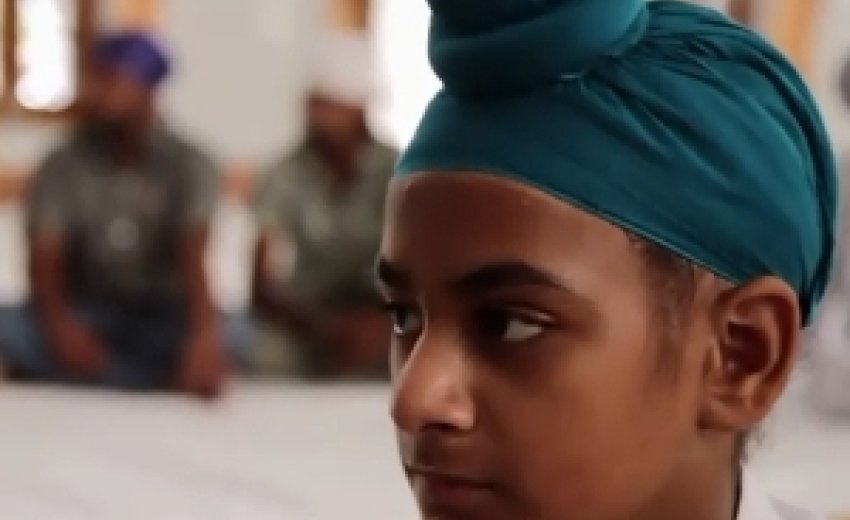“A Sikh is identified by the turban.”

In this 26 minute documentary, Gill interviews two Sikh mothers and their role in maintaining their sons’ identities.
One mother in the film tells us, “It’s our daily struggle. You shave everyday and the hair grows back, it’s our daily fight against God, against nature, when we trim or shave our hair.”
Such comments capture the thought and philosophy of many traditional Sikh families in Punjab. The film is a self-reflection of director’s one’s culture as well as an attempt to represent the Sikh spirit and ideology for the non-Sikh viewers. The film also shows the role of the mothers in maintaining their sons’ Sikh identities.

At the end we see a Sikh man throwing locks of his shorn hair into a river from a bridge. In the background we hear Chhalla, a Punjabi folk song about lost love and pain of separation. Roots of Love depicts the loss of Sikh identity and tradition. Mothers and grandfathers lament the loss of their children’s hair while young men give in to the societal pressures, despite the efforts of Sikh community members to teach them the value of their turbaned identity.
“I, personally, thought the film takes the side of the parents because the young men who cut their hair didn’t say much in the film. The guys that cut their hair looked ashamed of what they did and showed some regret” said one Sikh female who saw the film.
I asked Harjant Gill, the director of Roots of Love, a few questions:
RN: Who are the people you interviewed in the film?
HG: Aside from my grandfather, most people in the film I met in Punjab, while traveling, and doing my dissertation research.
RN: What inspired you to make the movie?
HG: It was actually this NY times article that first got me interested in the topic. Even though the film is not entirely inspired by my own experiences, I can relate to it because I grew up in a traditional Sikh family with unshorn hair, and then one day, before moving to the US, my dad had my hair cut… which at the time I was very young and I didn’t care much about… I enjoyed the transition, however, sometimes I do wonder what it would’ve been like had I not migrated, or not cut my hair.
RN: What did you learn, any insights in the process of making this film?
HG: I went into the making the film thinking that most Punjabi guys cut their hair for one or two reasons, but I learned that the choice of cutting hair varies or a variety of societal and cultural factors, including considerations for the family.
I also assumed that once the hair is cut, most guys abandon the turban simultaneously. But during my research I discovered that many guys continue wearing the turban, even after they’ve had their cut whenever it’s convenient… Turban is as a sign of belonging in Punjab, and guys will put it on, or take it off when needed.

I also thought that hair and turban are very masculine symbols, and that is certainly true, however while making the film, I learned that Sikh women (especially Sikh mothers) are equally invested in maintaining the son’s unshorn hair and turban – something I was not aware of before.
RN: Who is your audience?
HG: The primary audience of the film are viewers in India. The film was commissioned and made for PSBT (Public Service Broadcasting Trust) and Doordarshan, the Indian National TV. Though I feel that the film has a universal appeal and will resonate with Sikhs and non-sikhs living in North America and other parts of the world.
Harjant Gill is an award-winning film director and producer known for his documentary ‘Milind Soman Made Me Gay’ where he interviews South Asian Gay men in the US. Harjant is a doctoral candidate in Anthropology and Cinema Studies at the American University in Washington D.C. Gill was born in India, grew up in San Francisco CA, and now lives in Washington D.C. where he teaches Anthropology and Cultural Studies at Towson University. His doctoral research looks at cinema, masculinity and migration in north India.
Produced & Distributed by: Doordarshan India For more information: www.tilotamaproductions.com
*Related story: ‘To Beard or not to Beard’

